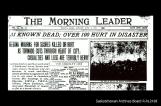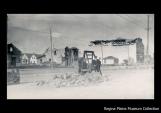1
Temporary Relief Measures3
The tornado struck Regina just before 5:00pm on July 12, 1912. Between the devestation left by the storm, and the downpour of rain that occured shortly afterwards, the people of Regina were left to scramble for shelter that very night. It is estimated that roughly 2,400 people were left homeless by the storm. While it is not known what many victims did that first night (it is hard to imagine anyone would be able to sleep after such an event), many temporary relief measures were in place the next day.4
Regina's mayor in 1912 was Peter McAra, who directed tornado relief and recovery efforts.1960
Regina, Saskatchewan
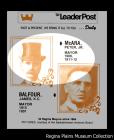
5
The burden of emergency measures fell upon the municipal government. 1912 Regina Mayor Peter McAra recalls some of the measures taken following the tornado in his memoirs, "Sixty-two Years on the Saskatchewan Prairies":"Protection had to be given in the damaged areas and we arranged that the troops at Camp Hughes should be brought in. A great many people were left homeless and the City went right to work and put up buildings to house them. We made plans to advance money to people who could re-establish their homes. The Canadian Pacific Railway and the St. John's Ambulance Association sent representatives to give all possible help, but after they had attended a number of our meetings they said that there was nothing that they could offer to do to improve the situation. Both organizations left substantial cheques to be used by our committees and withdrew. Many nights, I left the City Hall at one or two in the morning and, on awakening, I had no recollection of how I got to bed."
6
Detail from the Morning Leader Newspaper of July 1 1912, the day after the tornado.July, 1912
Regina, Saskatchewan
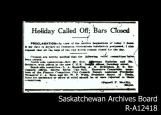
7
The Mayor's lot is not an easy one and Mr. McAra found it necessary to make a very unpopular announcement: Because of the tornado, all Dominion Day celebrations were indefinitely postponed, and all the bars in hotels were to remain closed for the day.8
Detail from the Morning Leader newspaper of July 1, 1912, the day after the tornado.1 July 1912
Regina, Saskatchewan
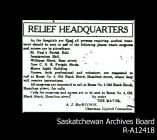
9
The Morning Leader newspaper of July 1, 1912 provided the citizens of Regina with the information needed to begin a recovery from the tornado.The front page listed the locations of the temporary relief shelters, as the hospitals had quickly filled with those wounded in the storm. Those requiring medical treatment were sent to St. Paul's Parish Hall, Immigration Hall, the Williams Block on Rose Street, the new Canadian Northern Railway freight sheds, and the Moore Light Building. Surgeons and other medical professionals were asked to reoprt to room number 4 in the Old Black Block on Hamilton Street for assignment.
Special trains from Moose Jaw brought surgeons, doctors and nurses to help with relief efforts. A few days later, another special train from Winnpeg brought more of the same.
10
Morning Leader newspaper announcement from July 1, 1912 the day after the tornado.1 July 1912
Regina, Saskatchewan

11
Immediately following the tornado, several relief committees were formed. The North Side committee office (presumably dealing with the area of the city north of the railroad tracks) was located in the new Canadian Northern Railway freight office. The South Side relief committee had its office in the Sports Room at City Hall. Groups were organized to find survivors, clean up debris and begin rebuilding the city as quickly as possible.In true early 20th century fashion, an ad was placed in the Morning Leader newspaper, asking "all real men" to help. Reporting to the city engineer, volunteers began discussing the rebuilding of Regina the very next day following the tornado.
According to Mayor McAra, the major services and businesses of Regina were back up and running within two weeks after the tornado. It is perhaps the city's attitude of rebuilding as quickly as possible that resulted in temporary measures not being recorded in great detail.
13
At any rate, the people of Regina were eager to begin the rebuilding process, and the wreckage from the tornado was cleaned up as quickly as possible. Building materials were salvaged as much as possible, and new materials were brought in as needed via rail. The rebuilding of the city was largely complete within 6 months of the tornado, although the financial repercussions would last much longer.14
Text by Jaymie KorolukRegina Plains Museum
